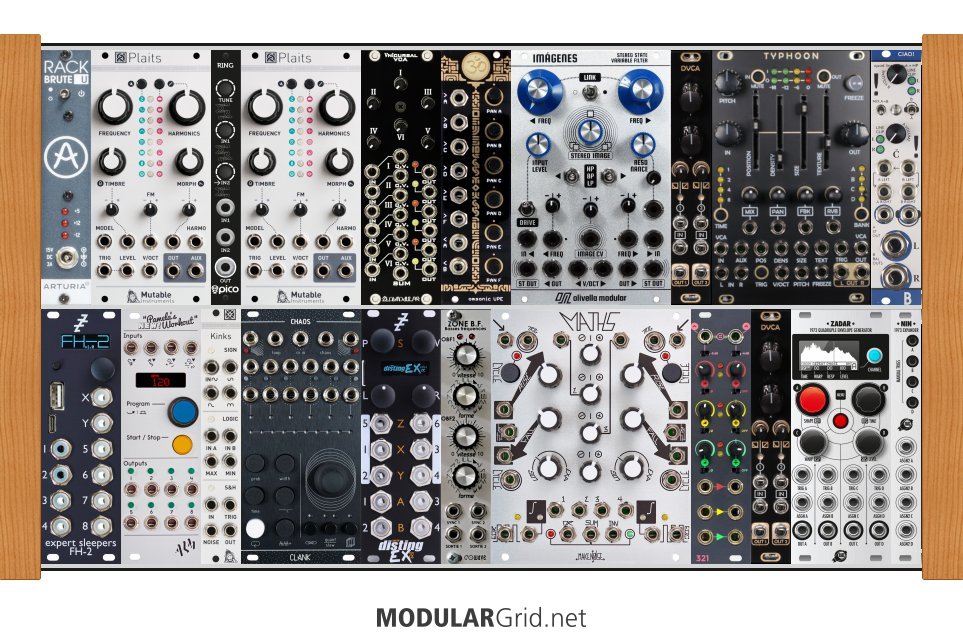Decided to have a bash at this, then got a surprise when checking the rack values. The Arturia Rackbrute 6U isn't 89 hp wide, it's 88. See the page at Arturia's site here: https://www.arturia.com/products/hardware-synths/rackbrute-6u/overview The copy there states that the cab has 176 hp totalled (including the 5 hp taken up by the P/S), which is 2 x 88. I already had a build completed in the original cab, then had to go back and change several things. Nevertheless, this came out pretty good, I think.
I opted to fill out the cab with a proper build. In the process, you'll find that several modules from the original version are now missing. And much of the trouble stemmed from the module sizes vs. functionality issue that always rears its head in smaller cabs. This is a pretty common problem, inasmuch as users want their builds to do everything imaginable...but they want that in something small, like this. So the automatic response I (and others here) have is to eject modules from these that just don't offer enough functionality for their size; this is what happened to the Contour, in fact, since it makes little sense to occupy 8 hp with just ONE envelope generator when 8 hp = 11% of a row in a Rackbrute. That's a poor use of space. Anyway...

The top row contains all of the audio, the modulation/control is on the bottom, flow in the top row is left-to-right, with the modulation and control modules feeding their signals from below.
Top row: There are now TWO Plaits. When doing a build, you really need a PAIR of oscillators. For one thing, it's a quick and dirty way to get two voices. But more often, you'll want to use these together for detunings, adding different waveforms, etc. The thing in between them is an Erica PICO ring modulator, which has its own internal sine generator, making it easy to apply ring modulation without resorting to using the other Plaits merely for a carrier. After this is a Zlob Vinucvrsal VCA, which gives you six linear, DC-coupled VCAs that can be broken out separately (which is what the configuration here is potentially set up for, if needed) for panning. And you don't necessarily have to use all six for audio; you can just as easily break out one or two of the VCAs from the module's internal mixbus if you need an extra or two for modulation levels (even though the mod row has two VCAs of its own...always best to have extra VCAs). Post-VCAs, you can see an Omsonic panning module with six inputs, and a stereo pair out. This lets you set up stereo placement for your signals pre-VCF.
The VCF is a stereo state-variable from Olivella that I've been a bit impressed with as of late. It contains an internal stereo "spatializer" as well, which can allow you to CV-control width, which can go from hardpanned L-R, to mono, to an inverse channelization (ie: R-L from an L-R input). After that is another VCA pair, a dual VCA from After Later based on the Veils circuit topology. Then there's your Typhoon, and after that is a very neat output module that also contains a second ganged stereo input...so if you want to shift back and forth between a signal processed via the Typhoon, then to just the VCF's outputs (or anything in between) as desired. It's also got your headphone preamp, plus your ganged stereo output level, and transformer isolation on the 1/4" outs to keep DC out of your system AND to help reduce noise, crud, and ground loops. And as a fringe benefit, you can even hit the transformers a little bit hard and get some nice "big iron" saturation for a touch of warmth.
Bottom row: Went all in on the MIDI interface and put in an Expert Sleepers FH-2, which can handle MIDI via USB from either your DAW or a class-compliant controller...so if you've got a Keystep or such laying around, you can tie it in right there. Then Pam's, Kinks (dropped the Links...the build's too small for mults, so I'd suggest using inline passive "widgets" instead)...and then this weird as hell thing from Clank that is a SIX CHANNEL "Aleatoric Brain". Think the "Turing Machine" sequencer on 'roids, with a wacky joystick interface, and the ability to store and loop various fragments, etc resulting from using it. Best to look this one up to see all of the mayhem it can cause. Disting EX is next, situated near the middle for convenience, then an Eowave Zone B.F. mkii gives you a pair of syncable wavetable LFOs. After that, the amazing 20 hp that is Maths, which is one of those exceptions to the "keep it small" rubric. It's that useful, really. Following Maths, you then have a Frap 321 for tampering with modulation signal behavior in a number of ways, and another After Later dual VCA specifically for modulation control duties. Then for four envelopes, a Xaoc Zadar + the Nin expander.
This isn't too bad. It'll make for a more-than-ample starter modular, plus it also has the ability to work with chance-determined melodic patterns (and a lot of other stuff) via the Clank Chaos. 2 x 104 would've made for a better fit, admittedly, but I think this 2 x 88 came out pretty decent.



